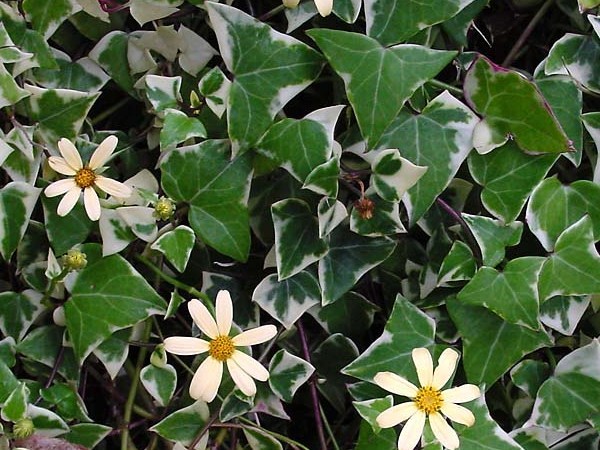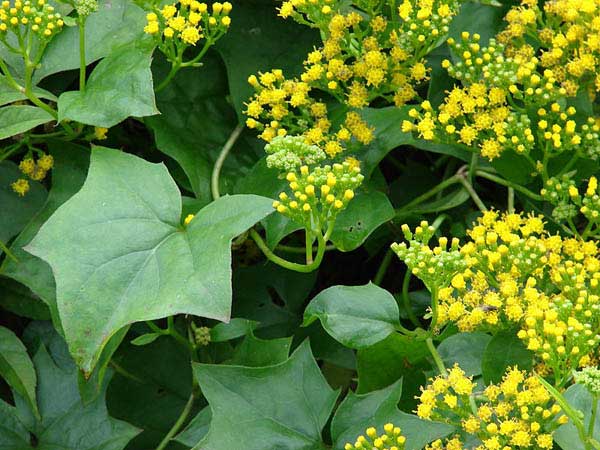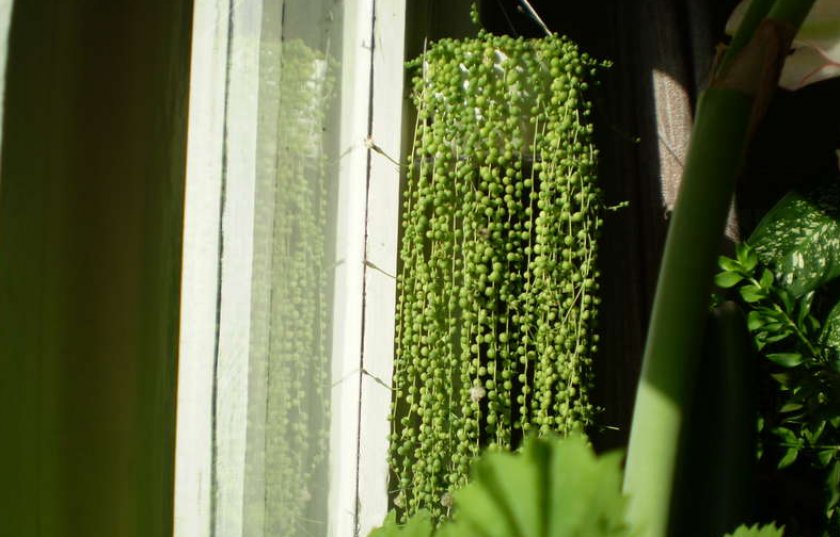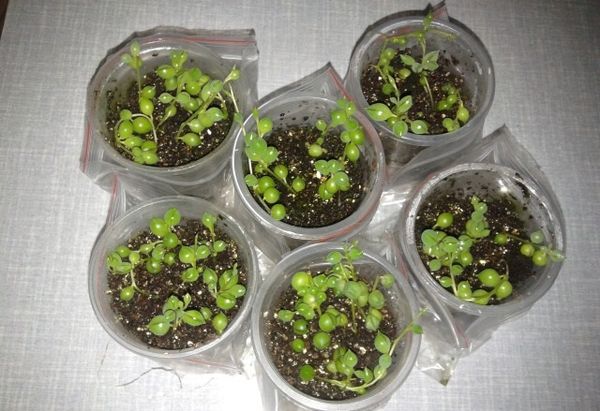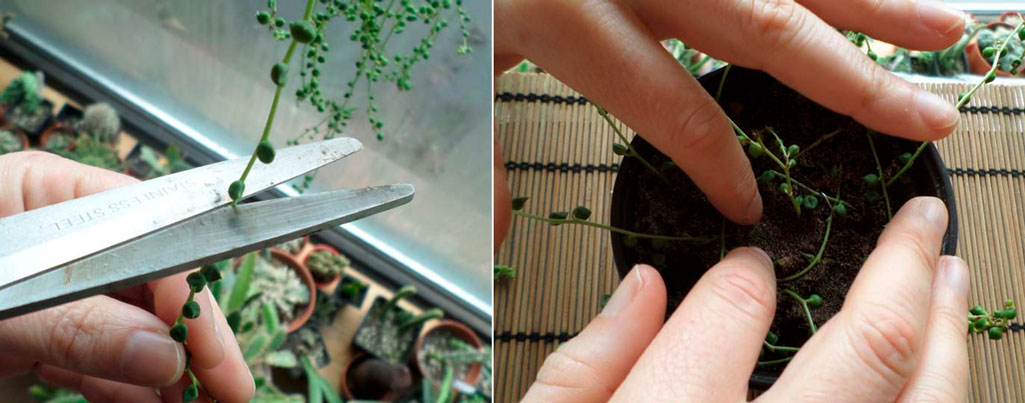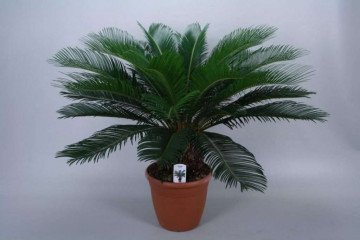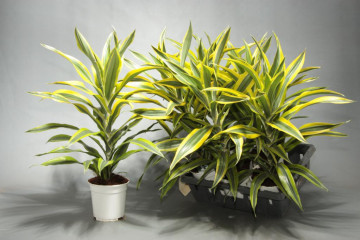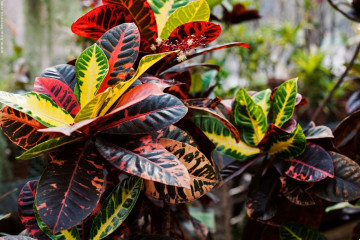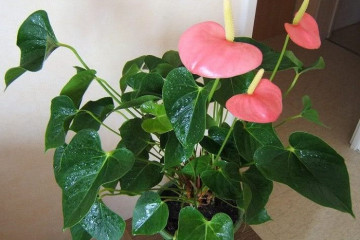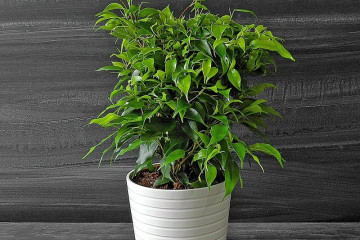Large-reed groundwort Senecio macroglossus
Content:
The ground plant macroglossus belongs to the plant genus Senecio, which means "old man", "aging". This is due to the fact that on each plant belonging to this species, after flying around the seeds, silvery pubescence appears, and the baskets become empty, bare. But there are some species of groundwort in which this is not observed.
Large-lingual variegated groundwort, what it looks like, which family it belongs to
Macroglossus belongs to the Asteraceae family, or, as it is also called, Astrovaceae. It can be both in the form of a liana, and in the form of a semi-shrub or shrub, tree. Due to its high resistance to weather changes, it can grow anywhere in the world.
Depending on the species and local climate, the shape of the plant can vary significantly. When the seed pods are empty, the stems are not always pubescent - they, like the leaves, may remain bare. Leaves are whole or dissected, oval or heart-shaped, elliptical, lobed or pinnate.
The large-reed groundwort is an evergreen vine. The leaves of the flower are triangular or pentagonal in shape, one of the ends protrudes more than the others. This is the "tongue" from which the plant got its name. The length of the leaves can reach 8 cm. Their color is variegated, green with yellowish-white spots and stripes.
Popular varieties of rosemary
The highest representative of the Senezio species is the Haworth perennial groundwort. Its length can reach 30 cm, shoots are both single and branched. The leaves acquire a silvery fluff during hatching, in adult plants they are up to 6 cm long. Flowers in Senecio Haworthii are dim, yellow or orange, have a spherical shape.
Other varieties of rosemary:
- Evergreen creeping groundwort is a perennial, not covered with silvery down. From the description of the culture, it is clear that it reaches a height of only 20 cm and has rough stems (6 mm). The lancelet-shaped leaves can be up to 4 cm long. All flowers are white and have the shape of baskets. The leaves are distinguished by a greenish-blue tint.
- Herreianus cultivar Senecio. Its second name is Gvozdelistny. The leaves of the culture are outwardly similar to gooseberries and have slightly pointed ends. This variety needs to be grown in a sufficiently lit place, but at the same time, the sun's rays should not reach it - the leaves can burn.
- Fulgens cultivar. Differs in bright, almost fiery, flowers on thin stems, round flattened bluish leaves. Many gardeners also call him Kleinia Fulgens.
- The Blue Rose Flower is not only different in color.This plant has arrow-shaped leaves, from under which flower stalks are knocked out in the form of baskets. Leaves can be either flattened or quite bulky.
- The big Tolstovyi was discovered in Madagascar and brought by researchers. It was distinguished by its large size and could reach a height of half a meter. At the same time, the leaves themselves were no more than 5 cm, everything else was the stems. Senecio large Crassissimus can be green with either a blue or gray tint.
- Ficus-shaped groundwort. It has recumbent weakly branched stems and narrow elongated gray-green leaves. In April-May, small greenish-white flowers appear on it.
Many, especially beginners, confuse the groundwort with ivy because of the shape of the leaves of some of its varieties. This comparison is incorrect, since these are representatives of different families.
Caring for a rose flower at home
The large-reed rootworm is undemanding to care for, but still has its own characteristics that must be taken into account.
Illumination and temperature conditions
The ground plant grows best in a lighted area, therefore, when planting in the garden, it is undesirable for taller plants to rise above it. At the same time, you need to protect it from strong northerly winds so that the thin rods do not freeze. When growing in pots, it is best to place the flower on a west or east facing windowsill.
Watering rules and humidity
The ground plant is a plant that feels great when the air indoors or outdoors has low humidity, regardless of the temperature regime. It is noteworthy that it is not required to moisten the leaves or the entire plant, and if dust accumulates, you just need to wipe it off with a dry napkin or rag.
The frequency of watering the ground plant varies with the season. In summer, the soil is moistened 2 days after its top layer is covered with a dry crust. In autumn, watering should be reduced, and in winter, it should be stopped altogether. They do this gradually, gradually reducing the amount of water or increasing the time interval between waterings.
Top dressing and soil quality
It is advisable to start feeding the groundwort in March and gradually stop fertilizing in August. Feeding should be done no more than once every 2 weeks. You can use a simple succulent fertilizer or a special fertilizer for asters.
The soil is bought in specialized stores or prepared independently. It should be composed of sand and leafy earth. When buying soil, it is important to check with the seller if there are nutrients in the soil for the groundwort. The soil should be loose with neutral acidity.
Flower container size
If the flower is small or freshly bred, choose a pot with a diameter of no more than 6 cm. For more mature plants, the diameter will be larger.
Features of plant transplant
An adult groundwort does not need frequent transplants. Gardeners do not recommend doing this more often than once every 2 or 3 years.
Flowering and dormant period of the plant
During the flowering period, the wild rose most of all needs nutrients and proper care. It is imperative to monitor the humidity and temperature of the air.The latter should be within +24 degrees during the growing season and +15 degrees during the dormant period.
Type and shape of flowers
When flowering occurs, differences in the inflorescence of individual species can be noticed. They can be assembled in shields or remain single, small and large. The flowers themselves can be in the shape of a basket.
Reproduction of Senecio macroglossus
Propagation of the groundwort can be carried out using cuttings, layering, seeds and leaves.
Leaf and stem cuttings
By cuttings, we mean small parts of the stem, about 9 cm long. A couple of lower leaves are removed from them and left overnight in the open air. During this time, the stem is slightly dried, and it is planted in a specially prepared sandy soil mixture. It is desirable that there are no weeds in it. You can control the climate in which the cuttings will be located, and move them as needed. Several stems are planted in one pot. The transplant is done after rooting.
Layers
To obtain layering, you need to put several small pots with prepared soil with nutrients near an already adult rosewort. After that, the leaf or even the stem must be folded back so that it touches the soil in the extra pot. After rooting, the shoots should be trimmed as carefully as possible.
Seeds
Gardeners do not recommend propagating the groundwort using seeds, since they are rarely fresh in stores. If they still managed to be bought, then several seeds, previously moistened with water, are sown in one pot. This is done so that sprouts appear on them. Watering should be done only with a sprayer so as not to flood the seedlings.
Possible problems in growing a groundwort
The plant is quite resistant to climate change and various pests, but you need to take care of it constantly so that aphids, ticks or worms do not appear.
Diseases and pests
The most common pest is aphids, which settle on young stems or layers. This is accompanied by an abrupt cessation of the development of the entire plant, as well as yellowing of the leaves and russet of flowers. To get rid of aphids, you need to constantly spray the leaves with insecticides.
If a spider mite appears, a cobweb must appear on one of the sides of the leaves. Also, the leaves darken noticeably, they can wrinkle. To get rid of the pest, you need to increase the humidity and spray the entire plant with warm water.
The large-reed groundwort is grown both in the garden and in pots. It can also be cultivated for further cutting flowers into bouquets. The plant outwardly differs depending on the species and climatic conditions of the area where it grows.
